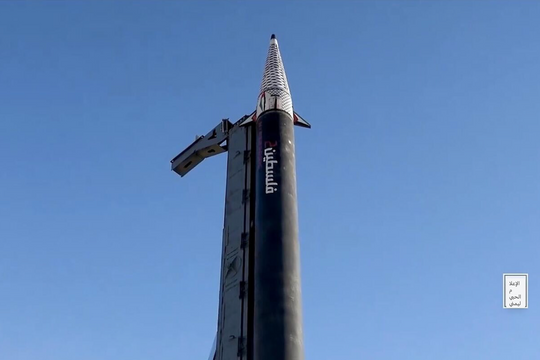Build a rocket that can orbit the Earth in three seconds
An American company is working on the world's first antimatter-powered rocket, which will be many times faster than today's fastest spacecraft.
 |
| Current missile technology is still quite limited. Illustration photo: Reuters. |
Voyager 1 is the fastest human-made spacecraft currently flying at about 14 kilometers per second, and could potentially be out of the solar system in a few years. But that speed is nothing compared to the distances in space. The Andromeda galaxy, our closest, is 2.5 million light years away.
"9 miles per second is really slow, considering the vast distances in space," Ryan Weed, co-founder and CEO of Positron Dynamics, a California-based company affiliated with SpaceX and NASA, said at the Wired 2015 conference on October 16. "We need a much better rocket, a much better way to get out into space."
The energy from antimatter is obtained through a process called “annihilation”. This is a unique property of antimatter: when antimatter and matter collide, they annihilate each other and produce pure energy. This is the most direct conversion of matter into energy.
To easily visualize the power of antimatter engines, Weed gives an example: if you have 20 grains of salt and 20 grains of "antimatter salt" collide with each other, the energy created will be equivalent to more than 1,800 tons of conventional rocket fuel, or equivalent to the energy that the entire city of London uses in a day.
With an antimatter engine, a rocket could circle Earth in three seconds, reach Mars in a few weeks, reach Pluto in a few months, and reach Alpha Centauri in about 40 years. At Voyager 1's speed, it would take 30,000 years to reach that star system.
However, current technology does not allow the exploitation of this fuel source. The positron particles, the antimatter of electrons intended to be used, still exist only in a very high temperature state, which cannot be controlled.
"With current technology, only one out of every 1,000 positrons can be harnessed to generate energy, which is too inefficient," Weed explained. To solve this problem, Weed and his team have filed a patent for a system called "Positron Cooling Using Electromagnetic Fields Combined with Semiconductors."
The company's immediate goal is to build a shoebox-sized satellite that will be launched into orbit using an antimatter engine. If successful, the project will not only serve the purpose of future space travel, but could also significantly reduce the cost of launching satellites into low orbit for technology companies such as Google and Samsung. Samsung is planning to launch 5,000 satellites to create a global broadband network.
According to VnExpress
| RELATED NEWS |
|---|







